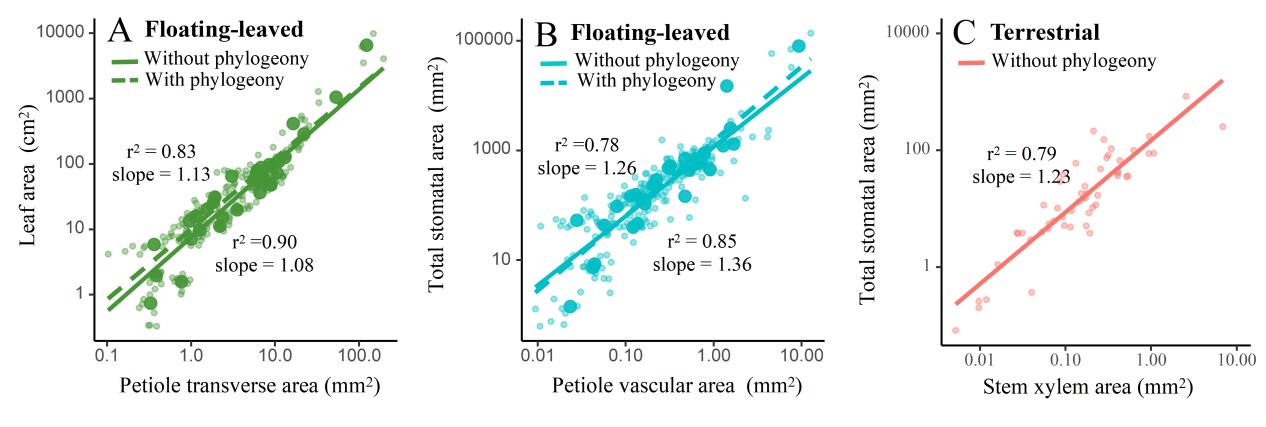Name:CAO Yu
Tell:
Email:caoyu@wbgcas.cn
Organization:Wuhan Botanical Garden
Stomata Vary Allometrically with the Weaken Xylem in Floating-leaved Aquatic Plants
2023-03-22
Previous studies reveal that allometric scaling plays a crucial role in regulating water deficiency both at the plant and leaf levels. The allometric relationship between leaf stomata and the xylem is assumed to maximize gains while minimizing energy costs during water transport. This allometry has been shaped through evolution and is evident across all vascular plants.
Floating-leaved plants have leaves with the upper (adaxial) surface exposed to air and the lower (abaxial) surface in water, and the stomata are mainly located on the upper surface of the leaves, unlike many terrestrial plants. These aquatic plants generally have an adequate water supply and a simplified vascular system, and thus are subject to less environmental constraint on the allometric relationships between stomata and xylem compared to terrestrial plants. As a result, it was expected that either no allometric scaling or different patterns of allometric scaling would be found in floating-leaved plants compared to those in terrestrial species.
The researchers of the Aquatic Plant Biology Research Group at Wuhan Botanical Garden conducted a study on 31 floating-leaved plants to investigate the allometric relationships between hydraulic traits in this special life form.
The study discovered allometric scaling relationships between stomata and other traits in floating-leaved plants and compared with that of terrestrial woody plants. It was found that the scaling relationship between the construction of leaf/stoma and petiole/vascular was hyperallometric, while the scaling relationship between total stomatal area and petiole xylem area was hypoallometric.
This suggests that natural selection has driven allometric scaling in floating-leaved plants to maximize carbon gain, similar to terrestrial plants.
The results of this study, published in Annals of Botany entitled "Allometric relationships between leaf and petiole traits across 31 floating-leaved plants reveal a different adaptation pattern from terrestrial plants", offer a new perspective on the unique adaptation strategies of floating-leaved species in comparison to terrestrial woody species.
This research was supported by several organizations, including the National Natural Science Foundation of China, China Scholarship Council, the Knowledge Innovation Program of the Wuhan-Shuguang Project, and the Youth Innovation Promotion Association of the Chinese Academy of Sciences.

Diagrams illustrating organs and tissues that are related to water transport in a water lily and other experimental species (part) (Image by TIAN Jing)

The scaling relationships between leaf and petiole traits. (A, between leaf area and petiole transverse area for floating-leaved plants (green); B, between leaf stomata area and petiole vascular area (blue) for floating-leaved plants; C, between leaf stomatal area and stem xylem area for terrestrial plants (orange) (Image by LIU Yang)